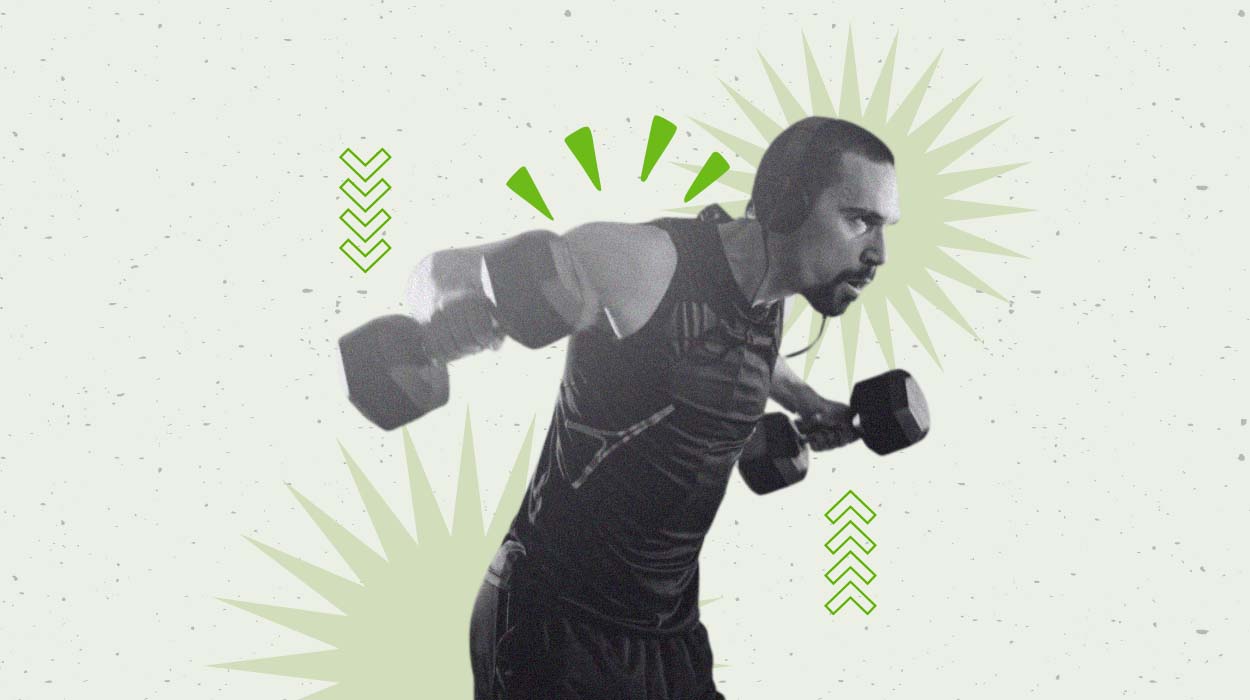
If you’re regularly working out in the gym, you probably have goals related to your physique. For those who are lifting weights, growing bigger muscles is often a top goal.
For people working on upper body strength, learning how to get bigger shoulders may be of interest. To get bigger shoulder muscles, you’ll need to do exercises that target the deltoids.
In this article, we’ll describe several of these exercises. You’ll find dumbbell shoulder exercises, including rear delt exercises and other specific options.
Top 6 Best Shoulder Exercises
If you want bigger shoulder muscles, try these exercises:
How To Get Bigger Shoulders: 6 Exercises To Try
If you’re looking for exercises to broaden shoulders, we’re here to help. The exercises below will target the deltoid muscles, or delts, in the shoulders.
Regularly incorporate these into your routine for bigger shoulders. You can work your shoulders just one day per week and see benefits. In general, doing a shoulder workout up to three times [1] per week is the maximum recommendation.
Seated Dumbbell Shoulder Press
The seated dumbbell shoulder press is an excellent exercise for deltoid activation. The deltoid muscles are the primary muscles in the shoulders. This muscle group [2] includes anterior, lateral, and posterior portions.
Research [3] has shown that the shoulder press activates the anterior and lateral deltoids more than other exercises. So, this is an excellent choice for shoulder growth. This exercise involves pressing dumbbells overhead while in a seated position.
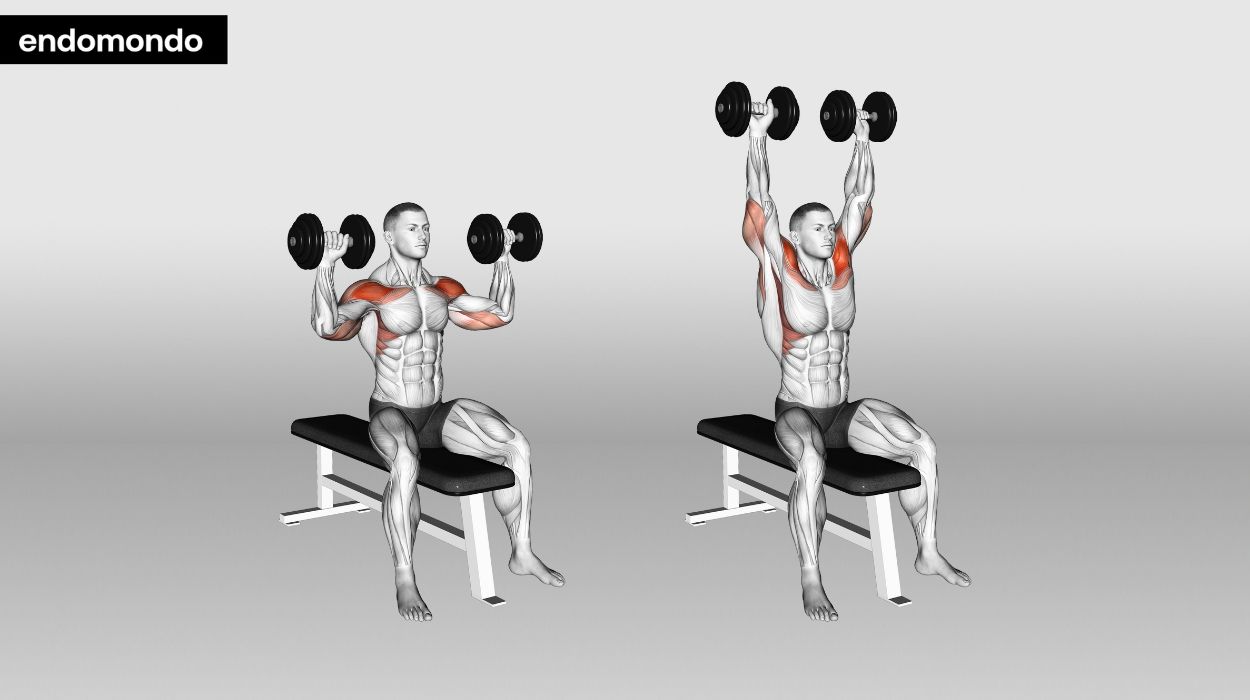
How to do:
- Grab two dumbbells. These should be heavy enough that your last few repetitions of each set are challenging to complete.
- Find a bench. If necessary, adjust it to an upright position so you can sit straight up while pressing the dumbbells up.
- Sit back in the seat with your back flat, and maintain a neutral spine.
- Pick up your dumbbells and prepare to press them up.
- Keeping your elbows in line with your hips, push the dumbbells straight up.
- Next, bring the weights back down, until your elbows are at a 90 degree angle.
- Repeat until you have completed a full set.
Tips: It is helpful to exhale as you press the dumbbells up. Also, remember to keep your wrists straight as you perform the exercise. Keep the dumbbells slightly in front of your body to avoid placing too much stress on the rotator cuff.
Optimal Sets & Reps: Choosing a moderately heavy weight and performing 8 repetitions for 4 sets has been identified [4] as effective for muscle growth.
Cable Lateral Raise
Cable shoulder workouts, including lateral raises, are effective for muscle growth. Research shows [5] that cable exercises allow for greater range of motion. So, wide shoulder workouts should include cable exercises.
Cable lateral raises are performed on a cable machine. You’ll grab a handle with one arm to hold onto the pulley. Then, you’ll raise your arm to the side, until the arm is parallel to the ground.
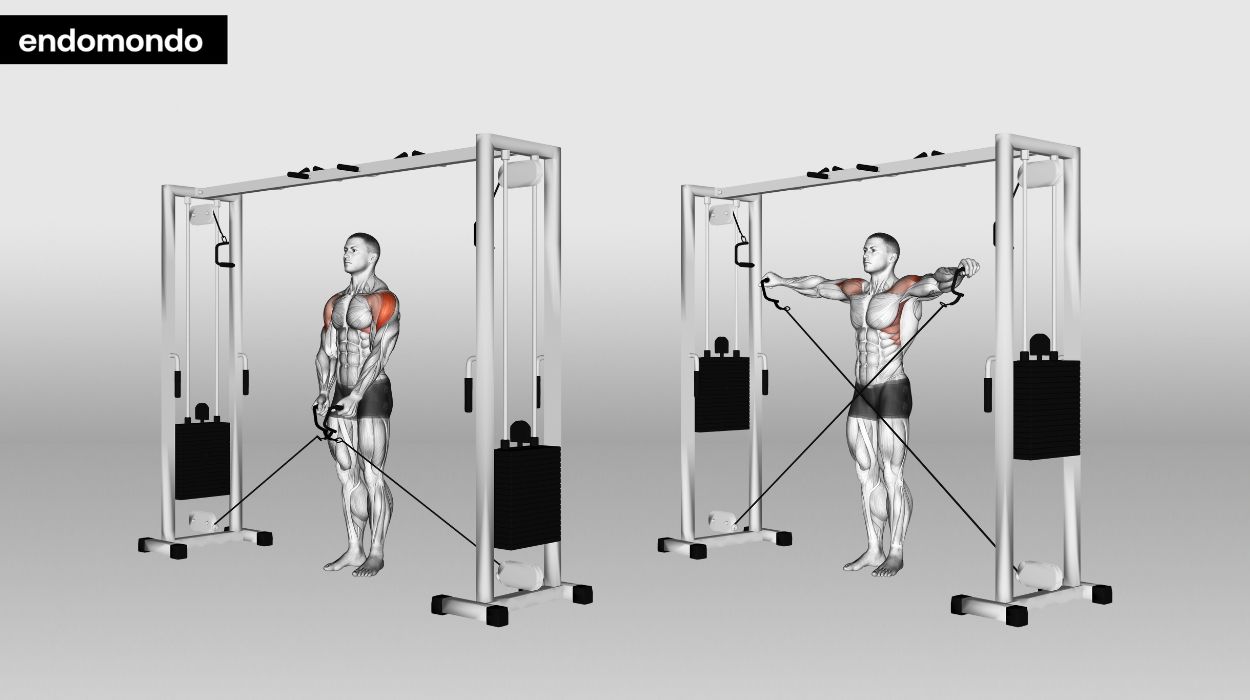
How to do:
- Find a cable machine, and select a challenging weight.
- Stand beside the machine, perpendicular to the middle of the machine.
- Grab the side handle on the machine with the hand closest to the machine, to keep your body stable.
- Use the hand further from the machine to grab the handle on the pulley.
- Starting at your pelvis, raise your hand up to your side, until your arm is parallel to the ground.
- Bring your arm back down to your pelvis, and repeat until you’ve completed the set.
- Once you have completed a set with one arm, switch to the other arm.
Tips: To get the optimal benefit from this exercise, ensure you are using your full range of motion. This means ensuring that you raise your arms until they are parallel to the floor.
It’s also important to avoid using your body to swing the weight upward. Instead, use a slow and controlled motion so you are lifting with your shoulders.
Optimal Sets & Reps: Choosing a moderately heavy weight and performing 8 repetitions for 4 sets has been identified [4] as effective for muscle growth.
Bench Press
The bench press is a popular gym exercise, and it’s actually among the top wide shoulder workouts. Research [3] has shown that the bench press activates the anterior delts in the shoulders.
You’re probably familiar with this exercise. It involves lying down on a flat bench with a barbell overhead. To perform the exercise, you’ll bring the barbell down to the chest, and then press it back up.
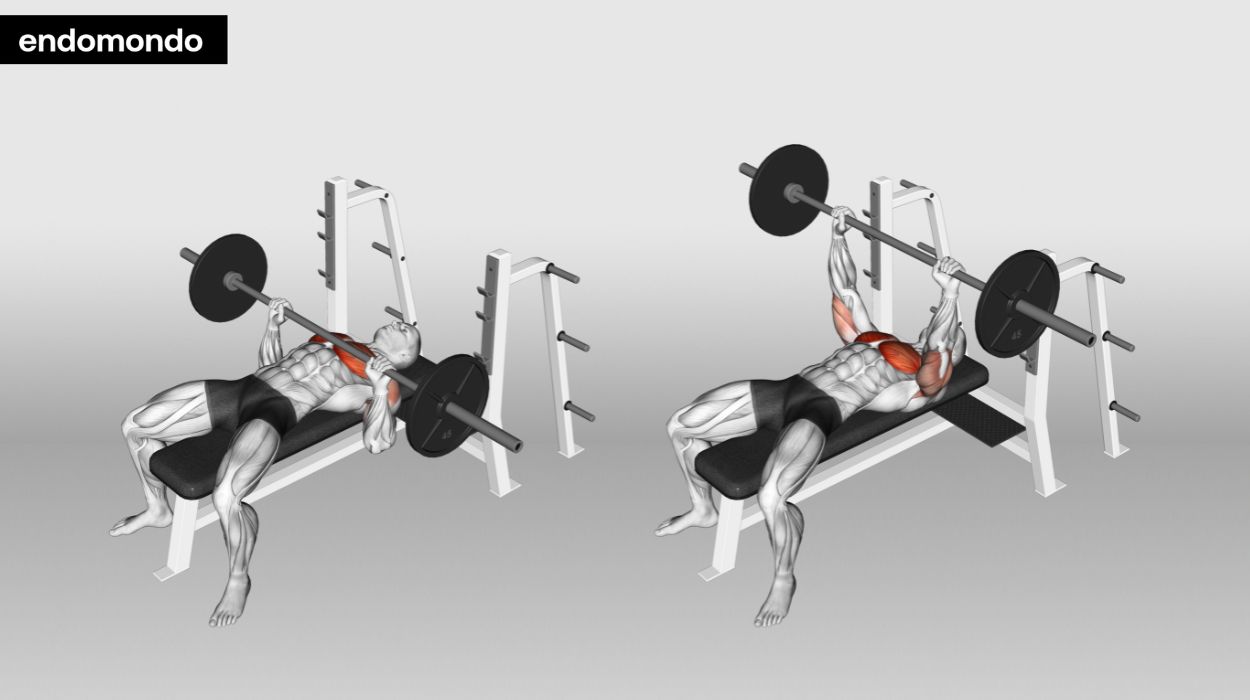
How to do:
- Lie down on a flat bench, and pull your elbows back to 90 degrees.
- Next, tuck your elbows in, so your thumbs are lined up with your nipples.
- Now, you will know the proper hand grip. You’ve reached the proper distance between your hands when your thumbs are in line with your nipples.
- Push your heels down into the ground, and drive your knees apart.
- Next, push the barbell up off of the rack, and bring it over top of your chest.
- Remaining tense, bring the bar down to your chest, forming an arrow shape as you pull your elbows down.
- Push the bar back up, and repeat until you’ve done a complete set.
Tips: Avoid flaring your elbows out when you bench press. You should be bringing the bar down to your chest in an arrow shape. If your arms are forming a T shape, you are not using the correct form.
It’s also important to consider that the bench press activates other muscles, including the triceps brachii. If you want to be able to lift heavier on the bench press, it’s important to also do triceps workouts. With a heavier bench press, you’ll activate the anterior delts even more.
Optimal Sets & Reps:
Choosing a moderately heavy weight and performing 8 repetitions for 4 sets has been identified [4] as effective for muscle growth.
Dumbbell Lateral Raise
If you want to learn how to get bigger shoulders at home, the dumbbell lateral raise is a good choice. This exercise can be done with a light set of dumbbells that you can easily store at home.
Similar to the cable lateral raise, this shoulder workout requires you to raise weights up, using your shoulders. You’ll simply use dumbbells instead of cables. Most of the time, this exercise involves raising both arms simultaneously.
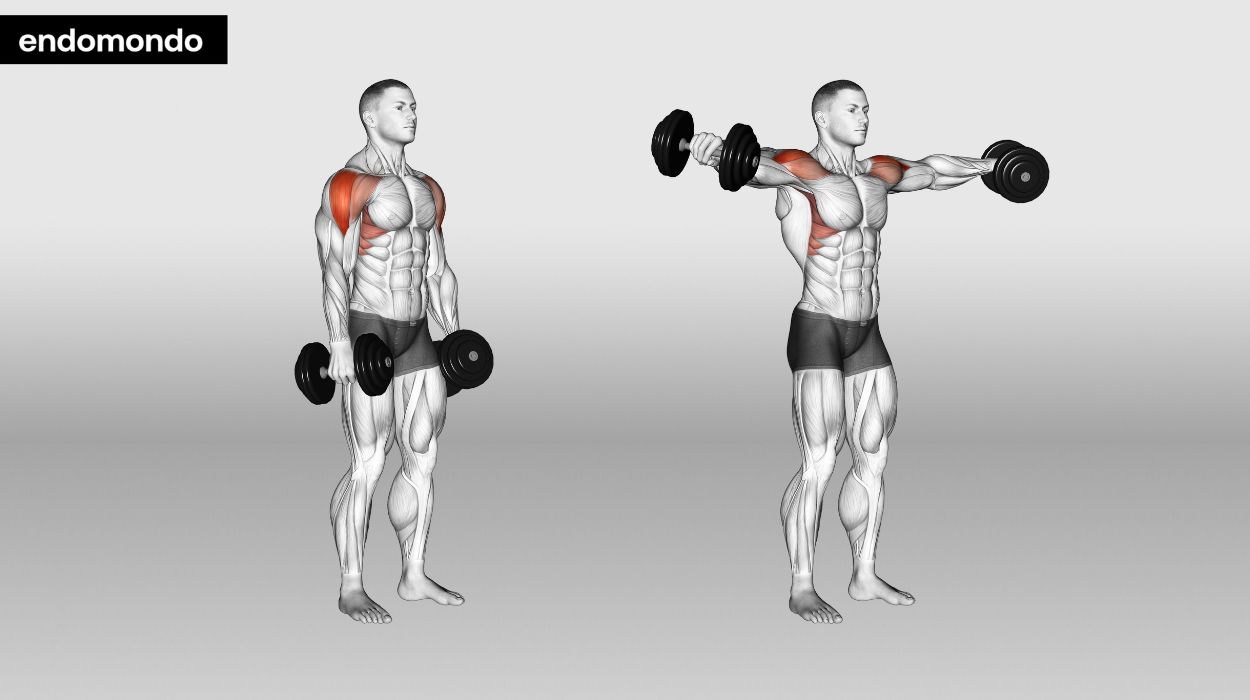
How to do:
- Grab a set of light dumbbells.
- Stand with your feet shoulder width apart.
- Keep your abdominal muscles tight, and keep your shoulders back.
- While holding the dumbbells in your hand, raise your arms to shoulder height.
- Lower the dumbbells back to the starting position.
Tips: Make sure you are using slow and controlled movements. You should not be swinging or using momentum to raise the weights. If you have to swing, or your hands come up above the arms, the weights are too heavy.
Optimal Sets & Reps:
The lateral raise generally requires lighter weight dumbbells when compared to exercises like the shoulder press. For lighter weight exercises like this one, 3 sets of 12 repetitions per set are recommended.[4]
Pull-Ups
Pull-ups are one of the best exercises to activate the rear delts. Research [6] has shown that pull-ups achieve the highest activation of the rear delt muscles, when compared to other shoulder exercises. With this shoulder exercise, you’ll pull yourself up while holding onto a bar.
Pull-ups can be challenging to perform, so you may have to modify the exercise. For instance, use an assisted pullup machine. Or, work up to pull-ups by first practicing dead hangs.
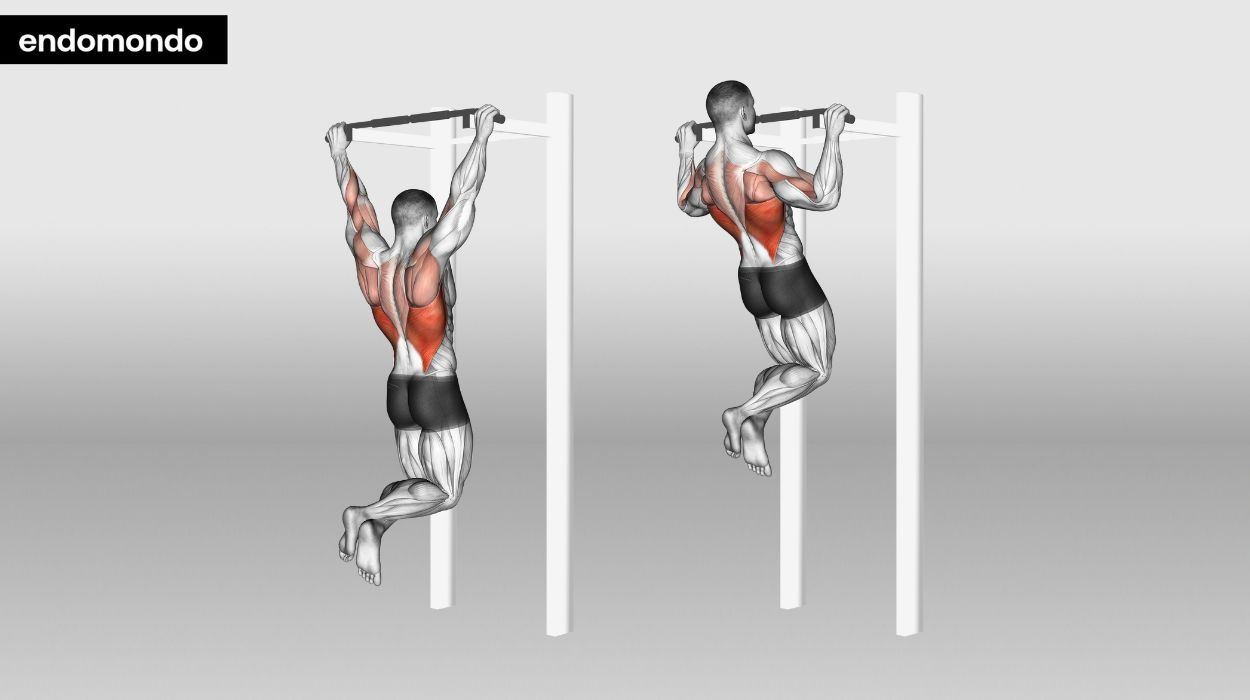
How to do:
- Find a bar or an assisted pull-up machine.
- Choose a hand grip of about shoulder width on the bar.
- Pull your shoulder blades down to get tension in your back.
- Next, bend your arms and pull your shoulder blades together to pull yourself up.
- Finally, lower yourself back down until your arms are fully extended.
Tips: Do not be discouraged if you cannot do a full pull-up right away. This exercise requires significant strength. Start with an assisted pull-up machine or deadhangs if you cannot perform pull-ups.
Also, be sure to use your full range of motion. This means fully extending the arms at the bottom of the movement. Use controlled movements, and do not kick or swing your legs.
Optimal Sets & Reps:
Research [6] has demonstrated that just one set of three repetitions significantly activates the rear delts.
Incline Dumbbell Fly
While typically considered a chest exercise, the incline dumbbell fly [6] also activates the anterior delts. This makes it an excellent exercise to broaden shoulders.
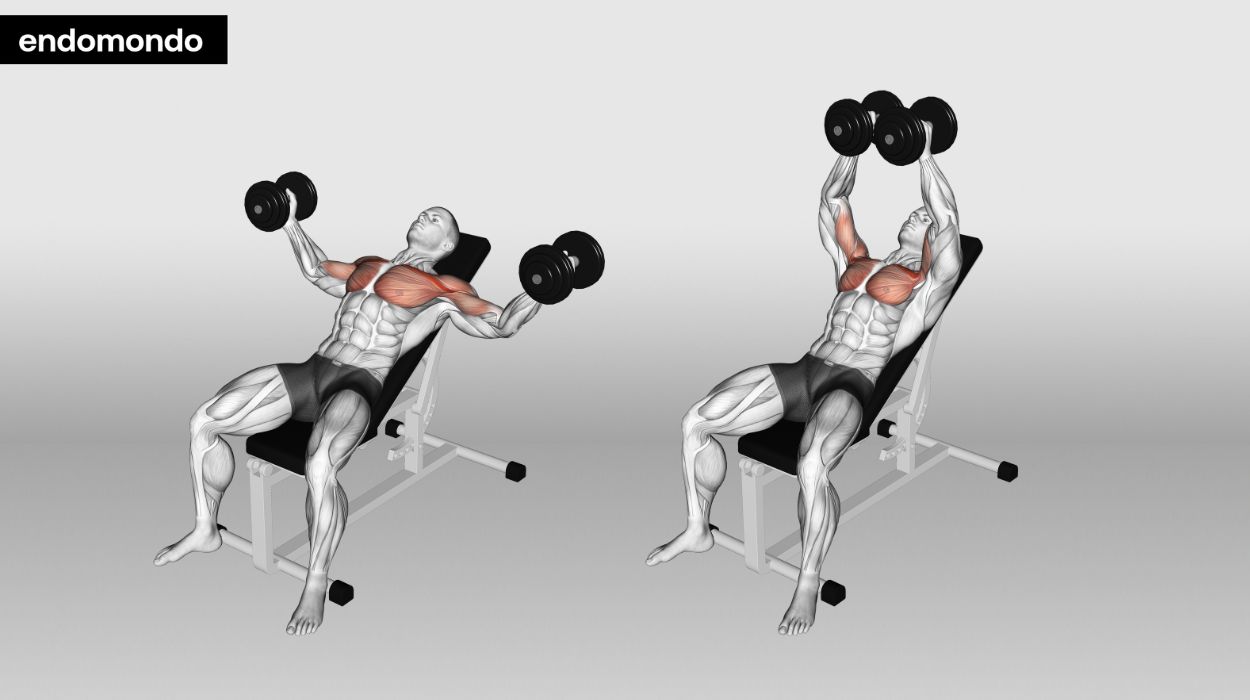
How to do:
- Find an inclined bench, and select lightweight dumbbells.
- Pick up the dumbbells, with palms facing inward, and lie back on the bench.
- Push the dumbbells straight up overhead.
- Keeping shoulder blades pinched back, bring the dumbbells back to the body’s midline, until they’re parallel to the floor.
- Using a slow and controlled motion, bring the dumbbells back up to the starting point.
- Repeat until you’ve completed your total reps.
Tips: Be sure to use a slow and controlled movement, so you don’t injure your shoulders. The shoulder is in an unstable position during this exercise. This means you don’t want too heavy of a load, and you’re better off with lighter weights.
Optimal Sets & Reps: Since this shoulder exercise typically requires lighter weights, 3 sets of 12 [4] are optimal.
What Muscles Are In The Shoulders?
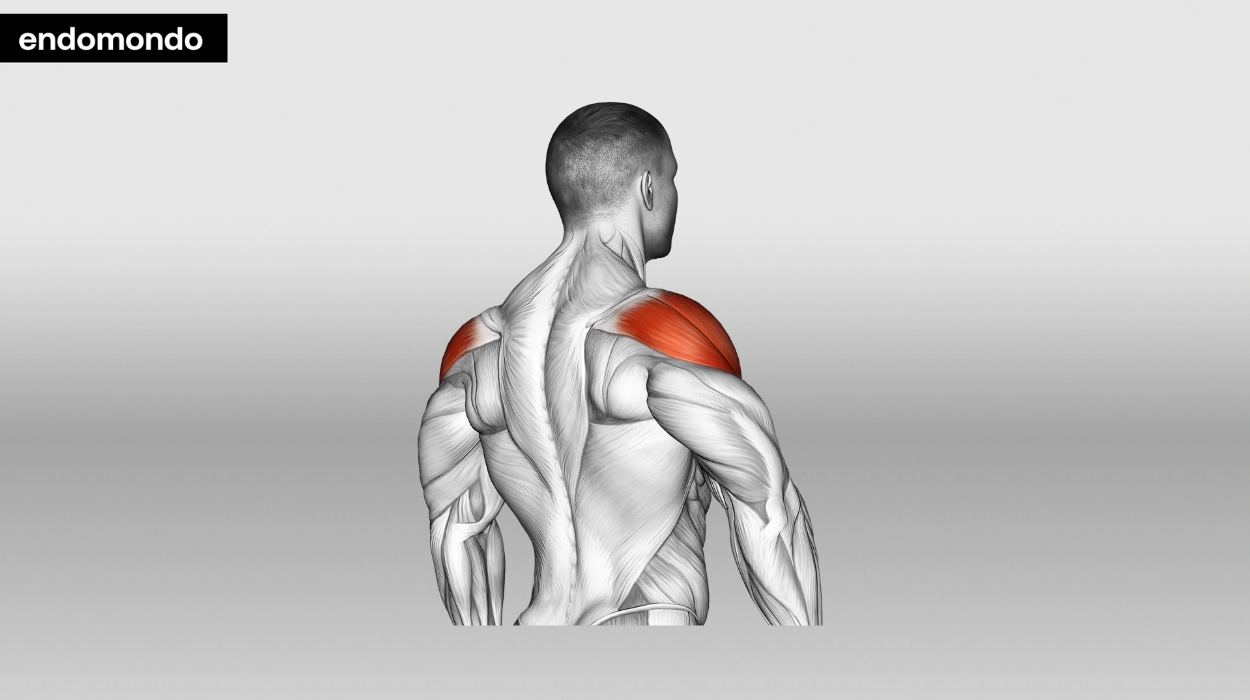
The shoulder muscles [2] are important for stabilizing the shoulder joint. The muscles that support the shoulder joint are called the rotator cuff muscles. This muscle group includes the supraspinatus, infraspinatus, teres minor, and subscapularis.
The other major muscle group in the shoulder is called the deltoids, or delts. When people are trying to build bigger shoulders, they are often focused on the delts.
The front delts, anatomically referred to as the anterior delts, sit at the front of the shoulder muscle. The delts also include the lateral delts, in the middle, and the posterior delts, in the back.
Tips To Avoid Injury & Increase Efficiency
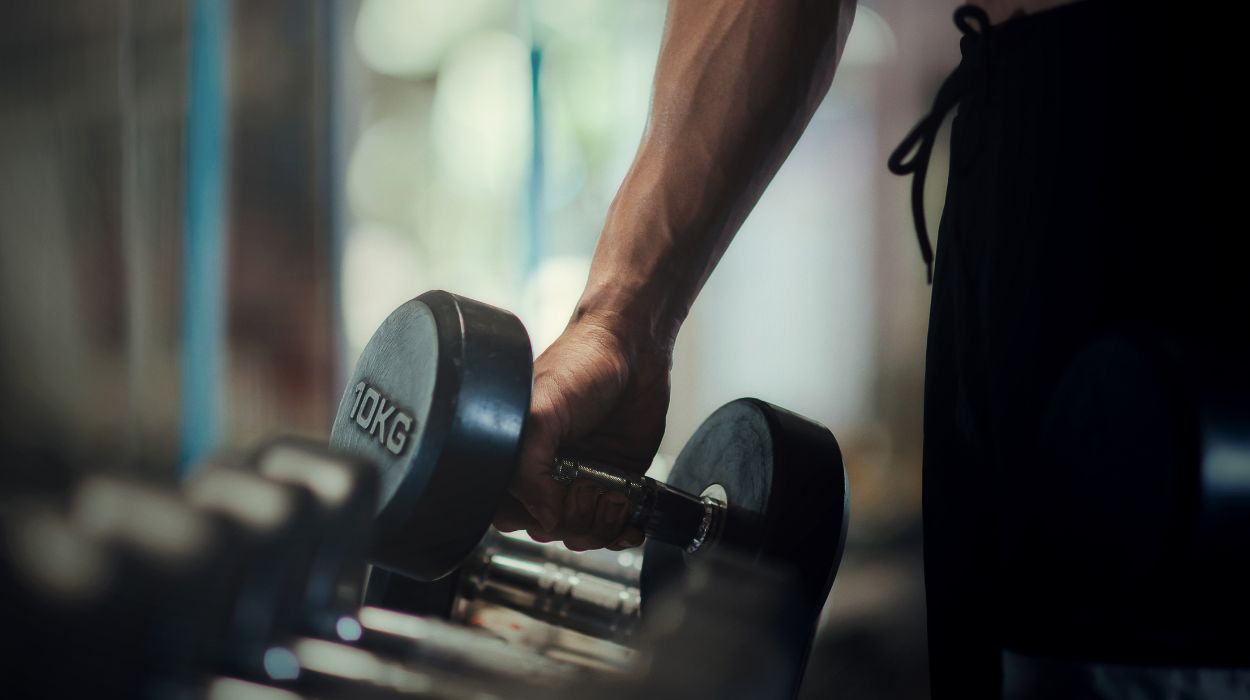
Research [7] shows that shoulder muscles are particularly prone to injury. When you train shoulders, you are putting a lot of stress on the shoulder joint. Anatomically, this joint is not intended to carry heavy loads.
This means you must use caution when doing shoulder training. Some tips that will help you to avoid injury include choosing light weight to start, and strengthening your supporting muscles. Do not lift too heavy of a load, and be sure to work your way up to heavier weights.
It’s also important to strengthen other upper body muscles to avoid imbalances. This involves working the biceps and triceps to prevent imbalances, which can cause shoulder joint injuries.
Also take care to protect your other muscle groups. Injuries to the biceps tendon can cause shoulder instability and injury to the shoulder joints. Be careful not to put too much load on the biceps, and start with lighter weights.
Finally, protect yourself from overuse injury by giving your shoulder muscles time to rest.
Conclusion
Muscle gains occur from resistance training, meaning you will need to lift weights for big shoulders. The exercises discussed here will activate the deltoids, which are the muscles in the shoulder.
Incorporate these exercises into your routine for shoulder muscle activation. Ultimately, your shoulders will grow bigger if you remain consistent and train one to three times per week.
Frequently Asked Questions
Some of the top exercises for broader shoulders include lateral raises, pull-ups, incline dumbbell flyes, shoulder presses, and bench press.
Shoulders may be more difficult to grow for some people. There are several factors that contribute to muscle growth. For instance, research with men [8] has shown there are genetic variants that contribute to muscle size.
To grow the shoulders quickly, you’ll need to do shoulder exercises at least once weekly. It’s also important to consume protein for muscle growth. A recommendation for athletes is about 1.6 grams [9] per kilogram of body mass per day.
You should not perform shoulder exercises every day, as muscles need time to recover for growth. Studies suggest [1] training a muscle one to three times per week is sufficient for growth. This means rest days are part of the routine.
Resources
- Schoenfeld, B.J., Grgic, J. and Krieger, J. (2018). How many times per week should a muscle be trained to maximize muscle hypertrophy? A systematic review and meta-analysis of studies examining the effects of resistance training frequency. Journal of Sports Sciences, 37(11), pp.1286–1295. doi:https://doi.org/10.1080/02640414.2018.1555906.
- PMC, E. (n.d.). Europe PMC. [online] europepmc.org. Available at: https://europepmc.org/article/nbk/nbk537056 [Accessed 24 Dec. 2023].
- Campos, Y.A.C., Vianna, J.M., Guimarães, M.P., Oliveira, J.L.D., Hernández-Mosqueira, C., da Silva, S.F. and Marchetti, P.H. (2020). Different Shoulder Exercises Affect the Activation of Deltoid Portions in Resistance-Trained Individuals. Journal of Human Kinetics, 75(1), pp.5–14. doi:https://doi.org/10.2478/hukin-2020-0033.
- journals.lww.com. (n.d.). April 2021 – Volume 35 – Issue 4 : The Journal of Strength & Conditioning Research. [online] Available at: https://journals.lww.com/nsca-jscr/fulltext/2021/04000/effects_of_4 [Accessed 24 Dec. 2023].
- Signorile, J.F., Rendos, N.K., Heredia Vargas, H.H., Alipio, T.C., Regis, R.C., Eltoukhy, M.M., Nargund, R.S. and Romero, M.A. (2017). Differences in Muscle Activation and Kinematics Between Cable-Based and Selectorized Weight Training. Journal of Strength and Conditioning Research, [online] 31(2), pp.313–322. doi:https://doi.org/10.1519/JSC.0000000000001493.
- Rabello, R., Bertozzi, F., Hauschild de Freitas, I.L., Molinari, T., Roncada, C., Sforza, C., Rodrigues, R. and Tiggemann, C.L. (2022). Activation of the three deltoid muscle portions during common strengthening exercises: A systematic review. Journal of Bodywork and Movement Therapies. doi:https://doi.org/10.1016/j.jbmt.2022.12.002.
- Alqarni, A. (2019). Common injuries in resistance training. Saudi Journal of Sports Medicine, 19(2), p.38. doi:https://doi.org/10.4103/sjsm.sjsm_4_20.
- Venckunas, T. and Degens, H. (2022). Genetic polymorphisms of muscular fitness in young healthy men. PLOS ONE, 17(9), p.e0275179. doi:https://doi.org/10.1371/journal.pone.0275179.
- Stokes, T., Hector, A., Morton, R., McGlory, C. and Phillips, S. (2018). Recent Perspectives Regarding the Role of Dietary Protein for the Promotion of Muscle Hypertrophy with Resistance Exercise Training. Nutrients, [online] 10(2), p.180. doi:https://doi.org/10.3390/nu10020180.




